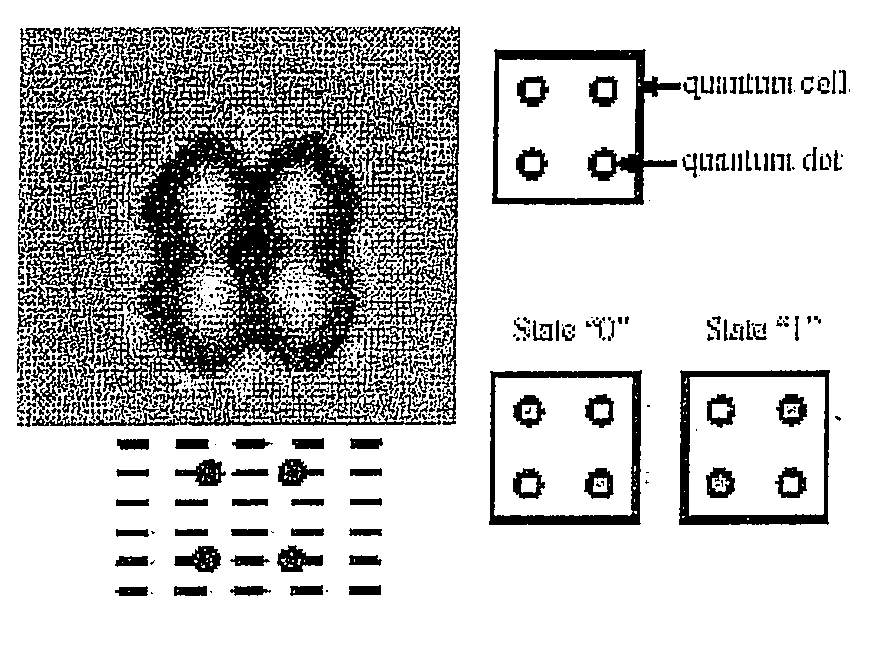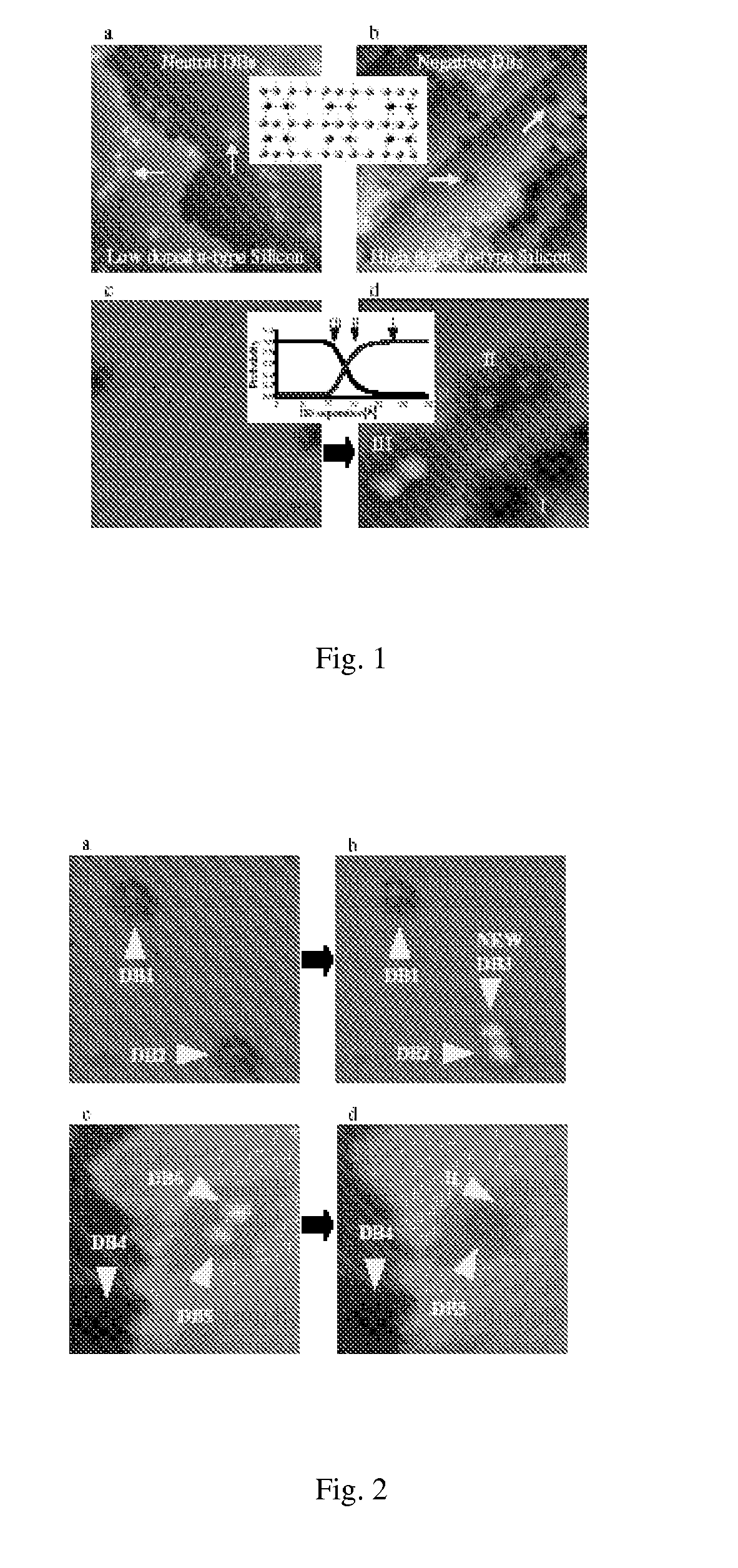Atomistic quantum dot
a quantum dot and atom technology, applied in the field of atomistic electronics, can solve the problems of limited implications of routine computational schemes, atomic, molecular or nano-scale entities into operational circuitry, and the inability to form a qca device, etc., and achieve the effect of largely immune to interferen
- Summary
- Abstract
- Description
- Claims
- Application Information
AI Technical Summary
Benefits of technology
Problems solved by technology
Method used
Image
Examples
Embodiment Construction
[0019]The present invention has utility in forming atomistic electronic devices such as quantum cellular automata or qubits. An atomistic quantum dot is controllably quantum mechanically coupled to embody the building block of a Quantum Cellular Automata device or a computational qubit. In a preferred embodiment a dangling bond (DB) operates as the atomistic quantum dot. Such cells exhibit a self-biasing effect, in that the electron occupation is set by cell geometry and the Fermi level. The binary state of the cell is controlled electrostatically. Unlike previous milli-Kelvin implementations, inventive devices operate above milli-Kelvin and even at room temperature (of 293 Kelvin) and are largely immune to stray electrostatic perturbations. An inventive dangling bond quantum device is controlled through proximal electrostatic perturbing dangling bonds or a electrode either suspended above, below or on the surface supporting the inventive device. An electrode illustratively includes...
PUM
 Login to View More
Login to View More Abstract
Description
Claims
Application Information
 Login to View More
Login to View More - R&D
- Intellectual Property
- Life Sciences
- Materials
- Tech Scout
- Unparalleled Data Quality
- Higher Quality Content
- 60% Fewer Hallucinations
Browse by: Latest US Patents, China's latest patents, Technical Efficacy Thesaurus, Application Domain, Technology Topic, Popular Technical Reports.
© 2025 PatSnap. All rights reserved.Legal|Privacy policy|Modern Slavery Act Transparency Statement|Sitemap|About US| Contact US: help@patsnap.com



